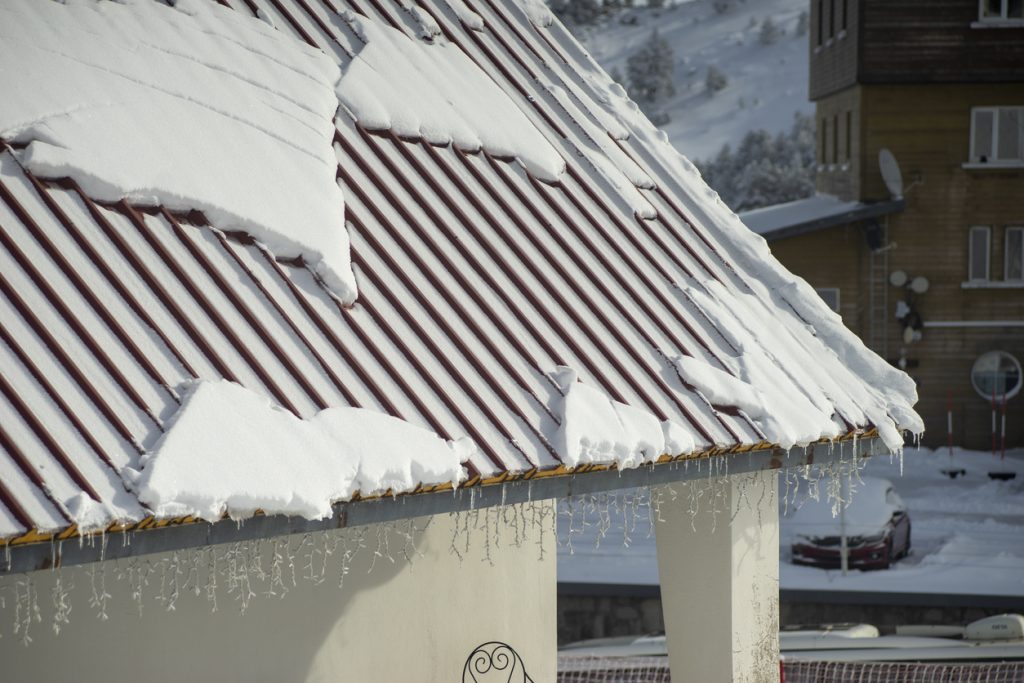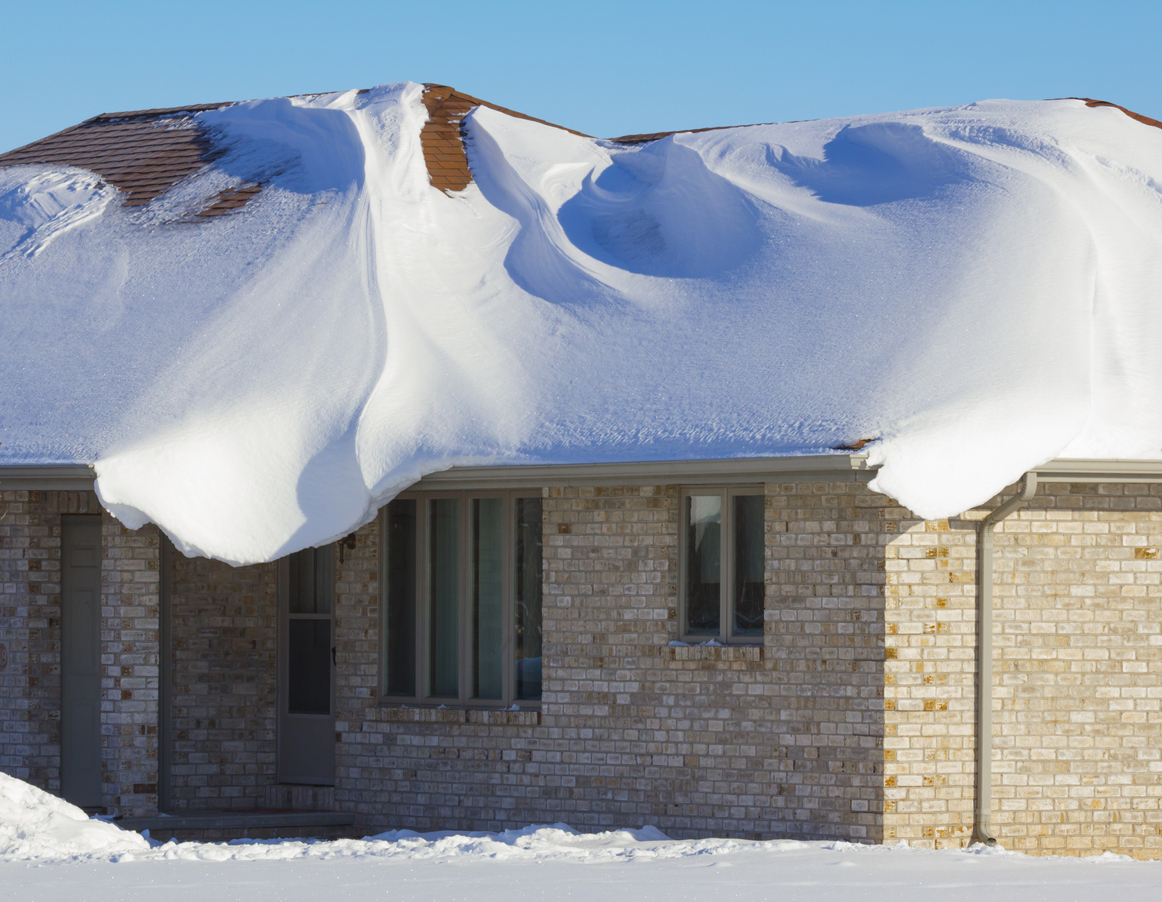Winter’s beauty often comes with a hidden risk: the weight of accumulated snow on your roof. Snow load awareness is essential for homeowners to understand the potential stress and risks that heavy snow can impose on their roofs. In this guide, Ainger Roofing, a roofing company in Collingwood, will delve into the factors affecting snow load and how to determine if your roof can safely bear the winter burden.

Factors Influencing Snow Load
- Snow Density: The Weighty Variable
Not all snow is created equal. The density of snow varies based on factors like temperature and moisture content. Wet, heavy snow weighs more than dry, powdery snow. Understanding the type of snow prevalent in your region is crucial in estimating its impact on your roof. - Accumulation Duration: The Piling Effect
The longer snow accumulates on your roof, the greater the stress it imposes. Prolonged snowfall can lead to layers of snow piling up, significantly increasing the load. Continuous accumulation without periodic melting or shedding amplifies the risk. - Roof Pitch: The Slanting Solution
The pitch or slope of your roof plays a role in how much snow it can bear. Steeper roofs allow snow to slide off more easily, reducing the risk of excessive buildup. Conversely, flat or low-pitched roofs are more susceptible to retaining snow, demanding closer attention to snow load limits. - Roofing Material: The Structural Support
Different roofing materials have varying load-bearing capacities. For instance, metal roofs are more slippery, allowing snow to slide off, while heavier materials like concrete tiles may retain snow for a more extended period. Understanding your roof’s material can help assess its resilience against snow load.
Determining Snow Load Limits
- Local Building Codes: A Regulatory Guide
Building codes in your area stipulate the minimum requirements for roof design and construction, including snow load considerations. Familiarize yourself with these codes, as they provide essential guidelines for ensuring your roof can withstand the expected snow load. - Consulting a Structural Engineer: Professional Assessment
For a precise evaluation of your roof’s snow load capacity, consider consulting a structural engineer. These professionals can assess your roof’s structural integrity, considering factors like design, materials, and local climate conditions. - Snow Load Calculators: Digital Assistance
Various online snow load calculators are available to estimate the potential load on your roof based on factors such as geographical location, roof pitch, and anticipated snowfall. While these tools provide a rough estimate, they can be useful for initial awareness.
Signs of Excessive Snow Load
- Sagging Roof Lines: Visible Stress
A clear visual indication of excessive snow load is a sagging or dipping in the roofline. If you notice any deformities or deviations from the normal structure, it’s a sign that the snow load may be reaching critical levels. - Cracking Sounds: Auditory Warnings
Unusual sounds, such as cracking or creaking, can be auditory warnings of excessive stress. If you hear these sounds, it’s essential to address the situation promptly to prevent potential roof failure. - Doors and Windows Jamming: Structural Impact
Excessive snow load can cause structural shifts, leading to doors and windows jamming or becoming difficult to open. If you experience these issues during winter, it could indicate the need for snow load assessment.
Snow Load Mitigation Strategies
- Roof Raking: Preventing Accumulation
Regularly removing snow from your roof using a roof rake can prevent excessive buildup. This is particularly effective for homeowners with low-pitched or flat roofs, where natural shedding is less likely. - Professional Snow Removal: Expert Assistance
Engaging professionals for snow removal is crucial, especially if you’re dealing with significant accumulations. Professional services have the expertise and equipment to safely clear snow without causing damage to your roof. - Reinforcement: Strengthening Structural Elements
In cases where your roof consistently faces heavy snow loads, reinforcing its structural elements may be necessary. Consult with a structural engineer to explore options for strengthening your roof’s load-bearing capacity.
Conclusion: Proactive Snow Load Management
Understanding the relationship between your roof and snow load is a proactive step in winter home maintenance. Regular monitoring, adherence to local building codes, and taking appropriate mitigation measures can help ensure your roof remains safe and resilient, even under the weight of winter’s frozen beauty. Roofers in Collingwood say to stay aware, stay prepared, and safeguard your home against the potential risks of snow load.

